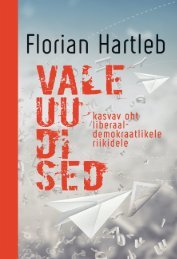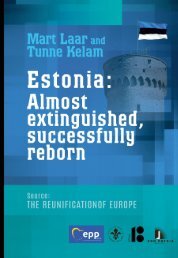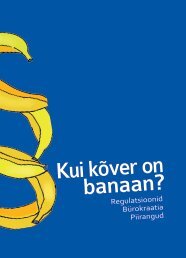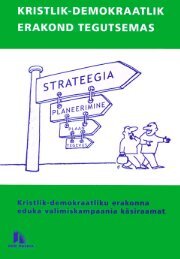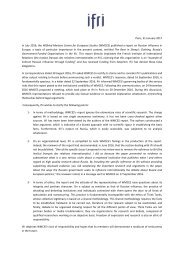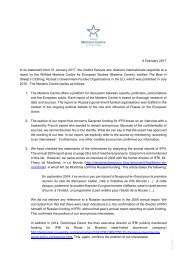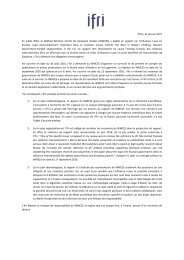Estonia: Almost extinguished, successfully reborn
The following text is the shortest possible review to help inform friends and guests from abroad about Estonia’s experience with foreign occupation and totalitarianism as well as its road to peacefully re-establishing national inde-pendence on the basis of democracy. Tunne Kelam Member of the European Parliament
The following text is the shortest possible review to help inform friends and guests from abroad about Estonia’s experience with foreign occupation and totalitarianism as well as its road to peacefully re-establishing national inde-pendence on the basis of democracy.
Tunne Kelam
Member of the European Parliament
You also want an ePaper? Increase the reach of your titles
YUMPU automatically turns print PDFs into web optimized ePapers that Google loves.
ESTONIA:<br />
<strong>Almost</strong><br />
<strong>extinguished</strong>,<br />
<strong>successfully</strong><br />
<strong>reborn</strong><br />
a couple of hundred (approximately 5 per cent) survived.<br />
At the same time <strong>Estonia</strong>n society was sovietized. A<br />
forced nationalization stripped practically all owners of<br />
their property without compensation. Industrial enterprises,<br />
banks, larger private homes and even private motor<br />
vehicles were taken under governmental control; bank<br />
accounts were confiscated. Farms were limited to a maximum<br />
of 30 hectares.<br />
The Soviet regime’s first mass crimes against humanity<br />
in <strong>Estonia</strong> took the form of deportations on June<br />
14, 1941. Preparations for the mass deportations started<br />
in the winter of 1940–1941. On May 14, 1941, the<br />
Central Committee of the Communist Party and the Soviet<br />
Government issued a special top secret (No. 1299–526)<br />
directive. Security forces were authorized to repress five<br />
categories of inhabitants, including “activists of the<br />
counter-revolutionary parties”, members of anti-Soviet<br />
and nationalistic organizations, former policemen, big<br />
landowners, factory-owners, civil servants, former Army<br />
officers and the “criminal element”. The term “counterrevolutionary<br />
parties” covered all non-Communist<br />
political parties and the term “anti-Soviet and nationalistic<br />
organizations” included all NGOs and patriotic<br />
formations, including the Boy Scouts. The Moscowdesigned<br />
deportations were the equivalent of a massive<br />
political cleansing operation against a civilian population,<br />
conducted in peace time. More than half of the<br />
cá 10,000 deported persons were women, children and<br />
old people, who were crammed into railroad cattle cars.<br />
They were transported as prisoners for thousands of<br />
17





